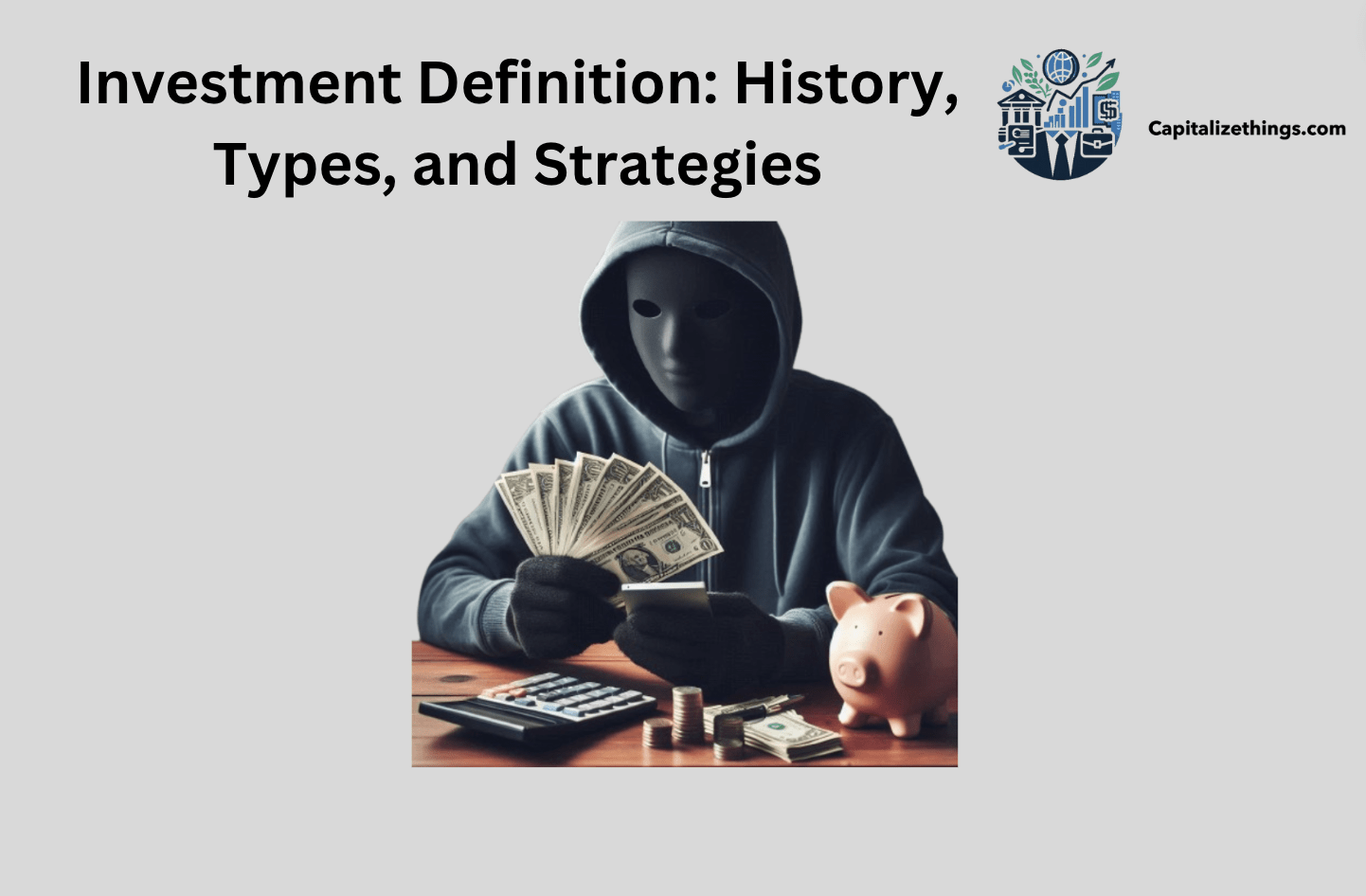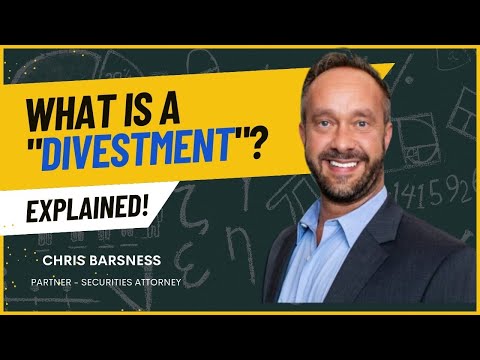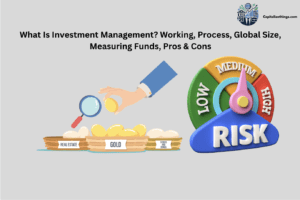Investment refers to producing things that will be utilized to make other things. In regular language, buying bonds or stocks is like an investment, but they are different from it. Investment involves buying goods or depositing money in a bank for future interest. Shareholder investment is the total amount invested on firm shares. Investments indicate long-term savings in economic management. Business management, economics, finance, uses it to refer to saving or delaying expenditures. The word signifies “action of putting something in to somewhere else”.
Historical records show that actions similar to investing have been surrounding since the Code of Hammurabi, written around 1700 BCE. But we must go back to the 17th century to find the kind of investment we know today. A study talked about the recent history of investing, some of the problems that are affecting new field, and some definitions that could help make a confusing and exciting investment strategy easier and clear (Impact Investing: A Brief History, Brian Trelstad, 2016).
The four main types of investments are fixed income, bonds, shares, and cash or cash equivalents. Equity includes any investment that offers the investor ownership in an enterprise. Equities keep preferred shares, mutual funds, exchange-traded funds, private Equity, and American depositary receipts. The word “fixed income” refers to any investment in which novices lend money to a business. Corporation and government bonds—local, state, and federal—are the most frequently used. Cash and its equivalents are the fourth type of investment. This consists of checking, CD, savings, money-market accounts, and wallet bills.
Investment strategies encompass diverse methodologies to optimize returns and manage risk. Key approaches include growth investing, focusing on companies with high revenue and earnings potential and value investing, which targets undervalued stocks with solid fundamentals.
What is an investment in economics?
“Investment” in economics means gross domestic private investment. This is about spending by businesses, not by individuals. Businesses put money into economic investments to help them produce more goods. Theoretically, these purchases are only based on input from the production side. When economists say the term “investment,” they’re not talking about things like 401k plans and buying stocks or bonds. In the economy, they’re talking about the business actions that make other services and goods. Investment is the value of all the services and goods that can be used to make other goods.
According to economics, investment means taking a risk with the hope of getting a return in the future. Investors include companies who build plants and install equipment, merchants who stock goods for sale, and vocational education students. A firm that closes a loss-making capacity is also “investing”: the first expenditure is severance payments to workers to exit contractual obligations, and the anticipated gain is a decrease in future losses (Investment Under Uncertainty, R. Lucas, 1971).
Where do I invest to earn a lot of profit?
To earn great profits, historical studies showed different methods to invest but 5 of them are the most common ones that beginner investors mostly consider starting with.
There are 5 common investments to earn profit:
- Certificates of deposit (CDs)
- Savings accounts
- Corporate bond funds
- Mutual funds
- Exchange-traded funds (ETFs)
1. Certificates of deposit (CDs)
High-yield certificates of deposit (CDs) from many renowned banks are great investments that pay guaranteed returns for five years or more. CDs, however, let you lock in an inevitable return for some time.
2. Savings accounts
Bank branch savings accounts are known for offering very little interest. However, some great banks are mostly online and offer meager rates. These banks are often good enough for investments.
3. Corporate bond funds
In the long run, the most important thing is to get rich. Bonds, which are loans to a company or government, will assist you stay on track once you’ve built up your wealth and are getting closer to your financial goal. Investors buy bonds from businesses and governments to earn income and their money when they expire. Bonds are fixed-income investments because investors know the interest rate. Payments are made twice a year. Investors sometimes acquire bonds at a discount and sell them at expiration to profit. Bonds are not insured, so investors can lack money if issuers expire. Bond interest rates vary based on length and issuer reliability.
4. Mutual funds
Exchange-traded funds (ETFs) and mutual funds are connected. They take money from many people and combine it to buy stocks and other investments. The most significant distinction is that exchange-traded funds (ETFs) are traded on major stock exchanges, and share purchases can be made whenever the stock market is active.
5. Exchange-traded funds (ETFs)
If you are not interested in researching and picking individual stocks, you can invest in ETFs and mutual funds instead. One example is an S&P 500 index fund, which will share your money among the 500 businesses that comprise the benchmark. Any one of them failing wouldn’t be disastrous.

What is the History(Origin) of Investment?
In the 1600s, merchant banks and acceptance houses agreed to support foreign trade for monarchies, governments, or individuals, and they also saved money for long-term investments in other countries. The New York Stock Exchange launched for the first time in 1792 when the United States was still an undeveloped nation. During the late 1800s and early 1900s, investment banking became popular, especially in the United States. However, this practice originated in the Middle Ages in Europe, when people traded goods like grain, silk, spices, and metals in places like Siena, Florence, and Genoa.
Throughout history, investing has affected individuals, families, corporations, and nations. Investment was reserved for the affluent until the fifteenth century. The democratization of investing is linked to epic events. This story has many lessons for professional and amateur investors who want to make better decisions. This engaging history also discusses present investor prospects and problems. It covers financed retirement, financial instruments and methods, investment malfeasance and regulatory reform, government economic policy, investment theory, and innovative investment structures.
Norton Reamer and Jesse Downing trace these patterns and profile the competition between lowest-cost index and exchange-traded funds and higher-cost hedge funds and private equity. Downing and Reamer seek to educate readers on the individual and social impact of investment and level the playing field by understanding this history and its risk legacy (Investment: A History, Norton H. Reamer, 2016).
The United States started to get big investment banking firms in the late 1800s. Big names in finance, like Goldman Sachs, JP Morgan, and Lehman Brothers, all got their start in the 1800s. There was a whole new way to invest in the United States in the 1920s. Most investors just had two concerns: buying and selling stocks for a profit. The American get-rich-quick plan began here. People spent their money on short-term purchases that they could sell for a profit when rates were high. Unfortunately, investors took out loans from brokers to buy stocks using this high-risk strategy.
How did the tech boom affect investments?
The information technology boom of the late 1990s and early 2000s affected investors. Technologies, especially startups, increased in value. Even if tech enterprises were unprofitable, investors were eager to invest in them for big profits. Tech businesses went public more frequently. Many firms hurried to the public market to take advantage of investor excitement and prices. Entrepreneurial capital investments rose with the tech boom.
Venture capitalists wanted to invest in innovative technology startups to identify the next big trend. Taking advantage of tech’s expansion, private equity firms invested more in the area. Depreciation is the amount that a fixed object is thought to lose in value over the course of a fiscal year. Things that can be touched, like buildings, equipment, cars, and other things, are bought all at once.
Business investment in IT grew rapidly in the 1990s and 2000 before falling in 2001. This boom and collapse asks logical questions: what caused the pronounced growth rate changes, and more significantly, what does that mean for IT investment? Information technology investment increased in the late 1990s due to declining IT prices, which were driven by technological progress. IT investment exceeded models in 1999 and 2000.
Expectations were too high, notably in telecommunications and dot-com, which drove IT investment growth. IT technology will certainly continue to change swiftly due to significant amounts of development and research devoted to identifying new breakthroughs (The Boom and Bust in Information Technology Investment, Mark Doms, 2004).
Market speculation increased during the IT boom. Technology companies were bought for interest and potential rather than financial stability by many investors. Excessive speculation and fast value fluctuations caused market volatility. Technology stocks had large price movements.
Tech companies could innovate quickly due to the inflow of investment cash. New technology, goods, and services shaped the industry’s future. Tech businesses expanded rapidly, entered new areas, and hired quickly. Excess investments and costly valuations caused the dot-com bubble. Unrealistic growth forecasts were used to determine the worth of several firms.
How has real-time data affected investors?
Having real-time market data can lower risks and improve accuracy, which in turn makes everything run more smoothly. Knowing the rules of the market can help advisors, investors, and asset managers better comprehend the existing risks and possibilities.
How has globalization affected investing?
Due to globalization, businesses worldwide can now talk to each other and learn about business possibilities in other parts of the world. More investors can explore new markets and find new investment options from more remote locations than before.
What are the types of investment?
When it comes to investments, there are a lot of different types of options that investors can use, but there are 6 types of investments which can return great profit.
Equity, shared investment programs, and digital currencies are becoming more popular. To compare stock investments, mutual funds, and cryptocurrencies, PubMed, EMBASE, Web of Sciences, Cochrane Libraries, and Google Scholar were searched. Stocks represent ownership in a company and offer the opportunity of long-term earnings from dividends and growth. Stocks have different risk levels depending on the company and industry and are better for long-term investors. Mutual funds pool investor invest and capital and it in a variety of securities.
This automated diversification solution is suitable for investors who want specialists to manage their portfolio. Mutual funds are good for short- and long-term goals. Cryptocurrency exchanges trade virtual assets. Prices of cryptocurrencies fluctuate rapidly and are highly speculative. As a short-term or speculative investment, cryptocurrencies require technical knowledge and high risks (Comparative Study of Stock, Mutual Fund, and Cryptocurrency Investments, Annisa Permatasari, 2023).
The 6 most common and most profitable types of investments are:
- Mutual Funds
- Bonds
- Equities
- Segregated Funds
- Exchange-Traded Funds
- Guaranteed Investment Certificates
1. Mutual Funds. The group of shares is called a mutual fund. It lets you hold a stake in more assets than you could buy alone. Professional fund managers decide where and when to purchase and sell shares in mutual funds. Investors own units of shared funds. The value of investments made by a mutual fund fluctuates in conjunction with those investments’ values. An investment fund’s risk is based on the types of things it holds. If the assets in the fund do well, the value of your units will go up. When things aren’t going well, the unit price goes down.
2. Bonds. Bonds are a type of fixed-income security that companies and governments sell. You give cash to a company or a government agency (the bond issuer) when you purchase a bond. The loan will last for a certain amount of time, known as the term. Most of the time, the bond provider will pay you interest over the life of the bond. Fixed interest rates are used for bonds where the interest rate doesn’t change during the bond’s time. After a bond’s tenure, you might get the money you loaned along with the interest.
Instead of only interest, you could earn money by selling your bond for more than you spent. Interest rates affect bond prices. Bonds usually appreciate when interest rates fall. Selling the bond costs you more than you invested. Interest payments from holding the bond are also yours. However, bond values fall when interest rates rise. Sellers can get a smaller amount than they paid for the bonds.
3. Equities. Equity is an investment that is directly made through the purchase of a stock or share in a company. Based on risk tolerance, investment goals, and other considerations, investment advisors assist investors in selecting stocks. If the value of the stock rises or if the company distributes dividends to its shareholders, stocks can be profitable investments. However, the stock value can decrease, and the organization may not pay dividends. Profitability, Company size, and financial strength influence stock value. Stock values can change frequently. Stocks are vulnerable to market size, economic conditions, financial stability, and currency instability. Capital gains occur when you give a more considerable share than what you spent. You will lose money if you sell it for less than you paid for it.
4. Segregated Funds. Life insurance companies sell investment products called segregated funds. There are some similarities between segregated funds and mutual funds. However, segregated funds secure your money more than mutual funds. The fund guarantees 75%-100% of your investment even if it loses money. But you must keep your investment for a particular period for the guarantee to work. Segregated funds cost more than mutual funds, and they can only be sold by advisors who are allowed to sell insurance.
5. Exchange-traded funds. ETFs, which stand for exchange-traded funds, are groups of investments, just like mutual funds. ETFs are traded on stock exchanges and are bought and sold like equities. ETFs invest in stocks, bonds, and commodities and can be specialized by sector, industry, or country. ETFs can be appealing to small buyers because they are cheap, offer diversification, and work like stocks. Just like with mutual funds, a fund’s risk depends on the purchased goods.
6. Guaranteed Investment Certificates. GICs are a low-risk investment that helps you to earn money. If you want to save money at a bank or other banking institution for a set amount of time, like six months to many years, you can get a GIC.
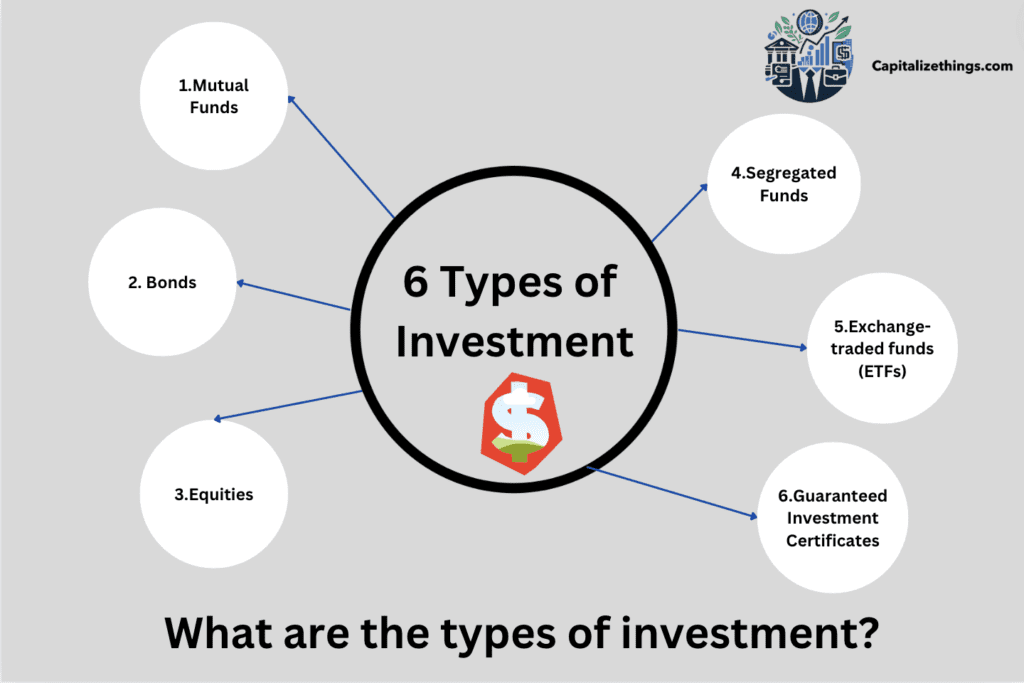
What are the Styles of Investment Strategy?
There are 3 main styles of investment strategy. For protection against downside risk, your investing style should be taken into account when you come up with the right risk management and diversification plans (Hedge and safe haven investing with investment styles, A. Hou, 2019).
3 Styles of Investment Strategy are given below:
- Large-cap Vs. Small cap Companies
- Growth Vs. Value Investing
- Passive Vs. Active Management
Large-cap Vs. Small cap Companies
A company’s size is estimated by its market capitalization. Company market cap is the amount of shares multiplied by its share cost. Some investors believe small-size companies might generate better returns due to their agility and growth potential. Small caps offer higher profits but higher risk. Smaller companies need more resources and more business diversity. Significant gains or losses can result from highly fluctuating share prices. So, if buyers want to take advantage of a chance to make more money, they must be willing to take risks.
More stable large-cap equities attract risk-averse investors. Many large caps have familiar names like Microsoft, GE, and Exxon Mobil. Over time, these companies have become 500-pound titans in their industry. Due to their size, some companies grow slower. Investments in large caps have less risk but significantly lower returns compared to small caps.
Growth Vs. Value Investing
Investors must decide whether to buy fast-growing companies or low-sector leaders. Analysts use financial factors and estimation to classify a company. Growth investors seek companies with high equity returns, profit margins, earnings growth, and low dividend yields. If a company has all of these qualities, it’s undoubtedly an innovator and profitable. The company is growing efficiently and reinvesting most of its revenue for its future growth.
Buying a strong company at a good price is worth investing in. Thus, analysts prefer low price-to-earnings and higher dividend yields. This style is highly concerned with the price at which investors purchase.
Passive Vs. Active Management
Before choosing an investment style, investors should decide how much they trust financial professionals to generate higher returns. Active management is a viable option for investors who want professional money managers to choose their stocks carefully. Usually, actively managed funds have a full-time staff of portfolio managers and financial researchers who are always looking for ways to get customers more significant returns.
Active funds cost more than passive ones because investors must pay for staff skills. Some investors dispute active managers’ ability to generate high returns. Empirical evidence reveals that passive funds outperform similar actively managed funds over time. No researchers are needed for passively managed funds; therefore, expenses are affordable.
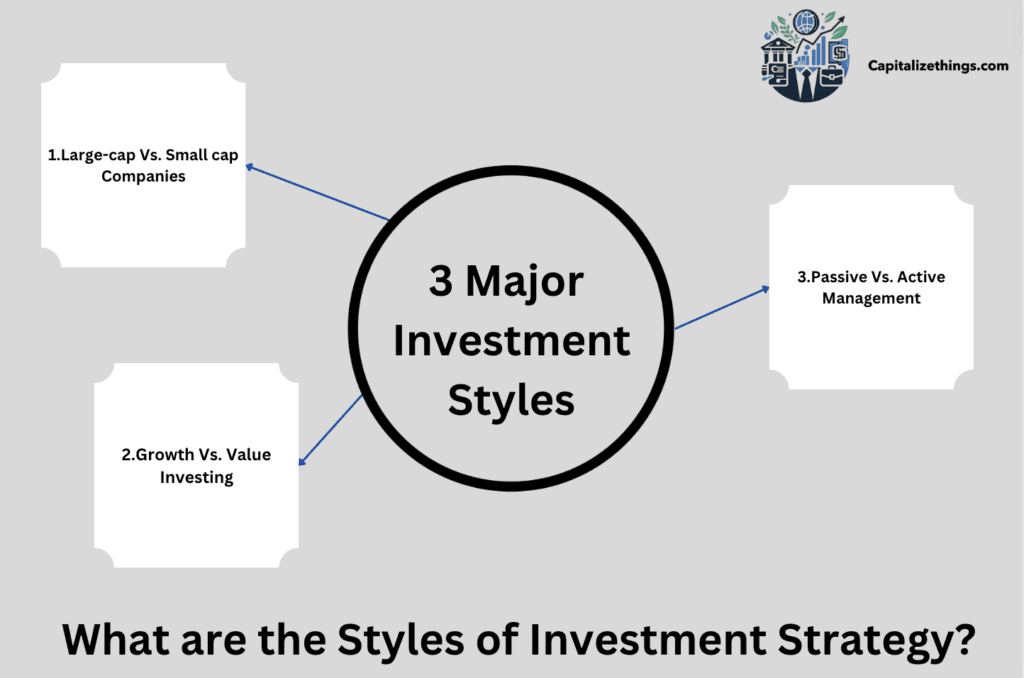
What are the two major investment strategies?
Growth and value investment are two main types of investment strategies. Growth investing emphasizes emerging markets, smaller companies, recovery shares, internet, and technology stocks that are likely to grow faster than average over time. In value investment, stock prices fluctuate wildly due to the market’s overreaction to excellent and negative news, which may not reflect an organization’s long-term strategy. People who invest buy the stock when it’s cheap and sell it when it costs more.
Where can I invest money to get a good return?
There are two most beneficial investments: Savings accounts and Bonds. Savings accounts are great for emergency, vacation, or short-term savings. At several banks, there is a six-transaction limit on savings accounts. Cash management accounts are more flexible and have similar or more excellent interest rates. If you’re new to investing or saving, consider keeping three to six months’ living expenditures in an account.
Bonds can be an amazingly safe way for buyers to get a regular net monetary. You lend money to a government institution like the municipal or federal government, which pays investors interest for one to 30 years. Due to their regular payouts, bonds are called fixed-income securities. Because of the US government’s complete credit and faith, government bonds are very safe investments.
How to calculate ROI?
ROI = Profit made by an investment/investment’s cost
What are the basics of investment?
Investment refers to generating a return on investment (ROI) by purchasing and holding investment products. It can assist you reach your financial goals or give you the extra money you need to increase your returns. Most of the time, investment is vital to achieving economic goals because it can increase profits and income. An overall definition of investing is selecting the right options to help you achieve your financial objectives. This includes knowing how to deal with risk and keeping it under control over time. You only need to know what you want to do to start. There are two options for investing: on yourself or with the help of a financial adviser. It’s essential to know about investment techniques to understand investment fundamentals.
There are 2 ways to spend for the short term:
- Day trading: Trading stocks during the day, or “day trading,” means buying and selling stocks during market hours. It is well known that day trading is hard, especially for new buyers, and that most people who have tried it have failed over time.
- Swing trading: Investors who follow this strategy want to buy and sell an investment every few days or months to make money. It aims to profit from significant changes during certain times of the year or regular trading trends.
On the other hand, long-term investing allows a more extended period for compounding interest and flexibility during market instability. It can be difficult for you to achieve your goals with long-term investments. There are 4 types of long-term investment strategies:
- Index investing: This is the most popular way for long-term buyers. Companies like Vanguard were the first to offer index funds in the 1970s, and the trend hasn’t gone away. With this approach, you put your money into whole areas of the market, like the S&P 500. Active investors often make more money, but passive investors usually lose more. You can get more money out of your savings with index funds because they usually have low fees.
- Value Investing: The goal of value trading is to find stocks that the stock market thinks are undervalued.
- ESG investing: When you invest in ESG stocks, you think about the climate, society, and the government. Companies’ environmental impacts are considered. Employee treatment and leadership diversity are measured in the social category. Governance tracks a company’s operations and policies. For this type of investment, investors try to choose equities or funds that get good marks for treating their employees and the community.
- Dividend investing: Those who buy shares to get an ongoing source of income are called dividend investors. Dividends are regularly paid investments but not always guaranteed. They are usually given every three months. Sometimes, investing in dividends can take a lot of money to make a small amount of money.
Do you have to pay tax on investments?
Yes! You have to pay tax for your investment’s gain. Interest and profits are common types of income from investments. Most of the time, you have to pay your regular income tax rate on interest and earned profits. On the other hand, some dividends can be taxed differently. For example, they are generally taxed at lower long-term capital profits tax rates. The company that manages your investments can tell you whether your returns meet the criteria.
The selling of investments usually incurs taxes only on gains. To determine if you made a profit or loss, deduct the basis price of your investment from the sale value.
How can you determine risk while investing?
There are four commonly used methods to measure risk before investing money. R-squared calculates the percentage of a portfolio of funds or security movements, which is provided by benchmark index movements. US Treasury Bills are the benchmark for fixed-income investments and bond ETFs. The standard for stocks and stock funds is the S&P 500 Index. R-squared values are usually expressed as a percentage from 0% -100%. An R-squared value of 0.9 suggests that 90% of the analysis explains 90% of the data variability. Risk frameworks with higher R-squared levels explain more dependent variable variation with their independent variables.
Conditional Value at Risk (CVaR) is another method to estimate risk. As an extension of VaR, the CVaR estimates the likelihood of a VaR break with some accuracy. It analyzes investment beyond its most significant loss level. This measurement detects tail events better. Value at Risk (VaR) statistically measures portfolio or company risk. VaR estimates the maximum loss with confidence on a given time. Consider a $5 million investment portfolio with a one-year 10% VaR. The portfolio has a 10% risk of losing $5 million in a year. Beta estimates the risk of an asset used for investment.
Can you hire a middleman to help you invest?
Yes! You can hire a Middleman who can help you invest your money. Middlemen can choose and manage investments according to their financial goals, tolerance for risk, and time frame. Specialists will assist you in establishing a financial plan with retirement, estate, tax, and other options. Intermediaries advises on investment opportunities, explaining both risks and rewards. They can analyze trends in the market and investment prospects. They track your investments and re-adjust your portfolio to meet your objectives.
What is the difference between investment and speculation investment?
Disambiguation of investment and speculation investment is given here:
Investment: When you invest, you trade your money for things that you think will go up in value over time and give you a cash gain. The business’s success matters more to investors than the investment’s cost. Investors prefer gradual returns over quick ones in weeks or months.
Speculation: When you speculate, you buy things with the hope of making big profits, usually in a very short time. Speculators can quickly switch between buying and selling assets. Speculative investments often have a big chance of losing all of their value, but investors are willing to take that risk for the chance of huge returns. Many unproven companies, penny stocks, and cryptocurrencies are examples of speculative assets.
Can you evaluate investments?
You can use different tools and methods to evaluate investments, like discounted cash flow analysis, financial ratios, or relative value and there are other models like gordon growth model, dollar cost averaging(DCA), dividend discount model, and dividend growth rate, all have different usage in terms of investment. The objective is to identify whether the investment is inexpensive or overpriced and has good or bad prospects.
What is divestment?
Divestment refers to the way of selling investments, subsidiary assets, or units to make the worth of parent company. Divestiture is another word for divestment. Divestment is the opposite of an investment and generally occurs when a subsidiary asset or business is not performing as well as expected.
However, there are times when a company must sell property because of the law or government rules. A divestment plan can also help a company reach other important business, social, financial, or political goals. Take a look at video below to understand divestment more.
Why do companies or people choose to divest?
There are five common reasons divestiture occurs: Raising cash, bankruptcy, non-core businesses, earnings, and unlocking value.
How does divestment impact the financial performance of companies and organizations?
Divestment helps companies earn cash, lowering debt while making them more appealing with a low debt-to-equity ratio.
Conclusion
Investment is purchasing an asset to make money from it. Simply put, it’s when a company spends money to make money. An organization needs manufacturing machinery, land, industry buildings, and vehicles to generate goods and services to earn profit. Companies can put their money into both tangible and intangible assets. Real assets are things that can be seen and touched. Even with all its assets, a company can invest in new goods. There are different kinds of investments a business needs or want to make based on its needs and the products or services it sells. Land, buildings, machines, cars, and new products are investments.
Businesses can use return on investment, break-even analysis, and average rate of return to evaluate investments. ARR is the average yearly return (profit) from an investment. When output reaches break-even, sales income equals total costs. A firm must create and sell a certain number of units to cover its costs. ROI is another way to evaluate investment profitability.

Larry Frank is an accomplished financial analyst with over a decade of expertise in the finance sector. He holds a Master’s degree in Financial Economics from Johns Hopkins University and specializes in investment strategies, portfolio optimization, and market analytics. Renowned for his adept financial modeling and acute understanding of economic patterns, John provides invaluable insights to individual investors and corporations alike. His authoritative voice in financial publications underscores his status as a distinguished thought leader in the industry.

